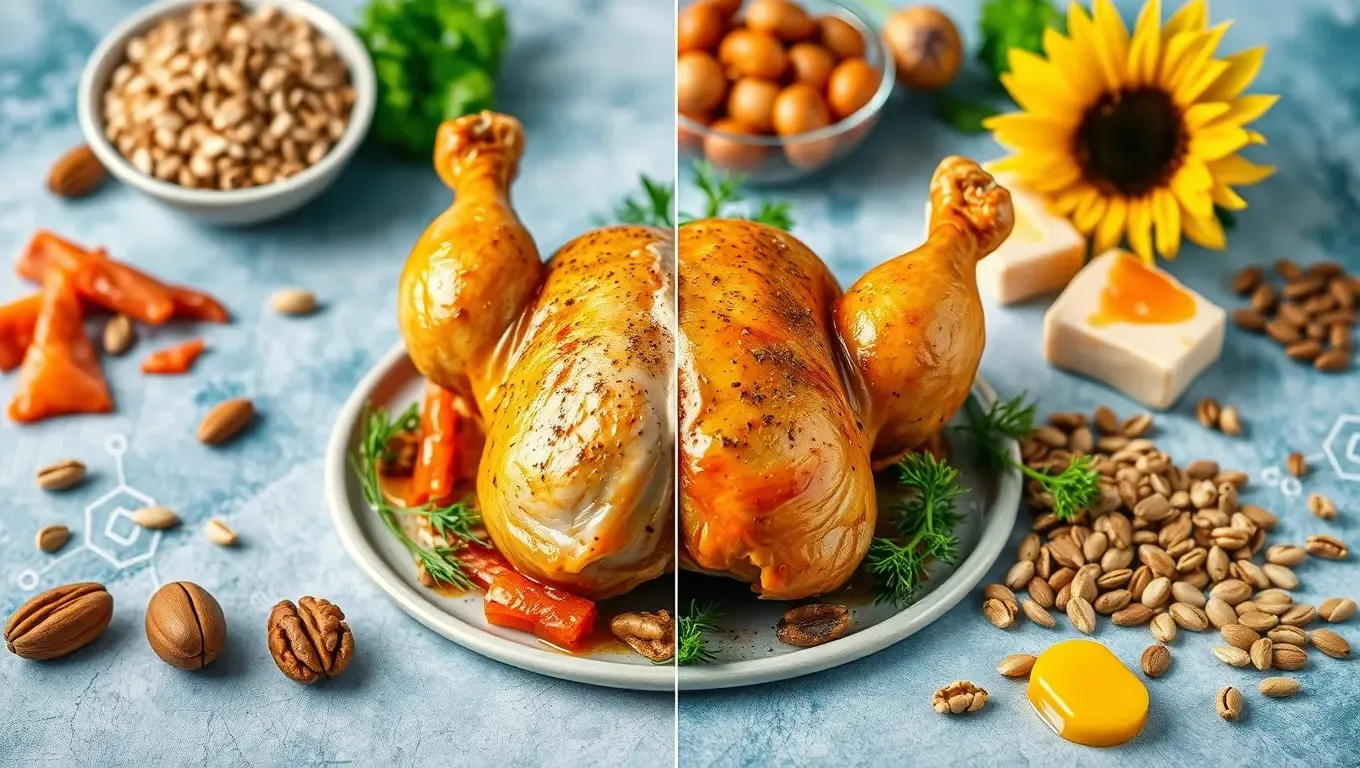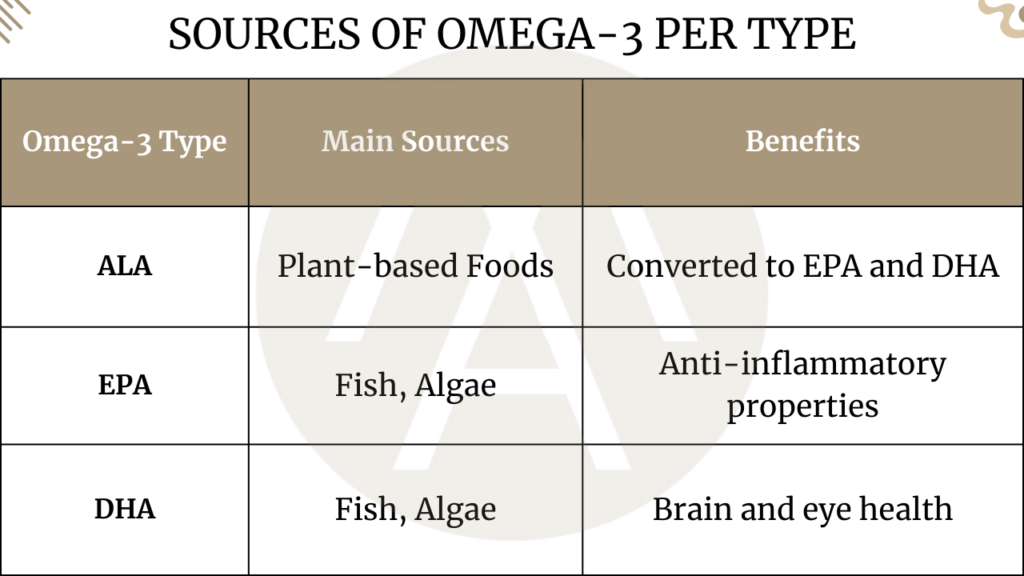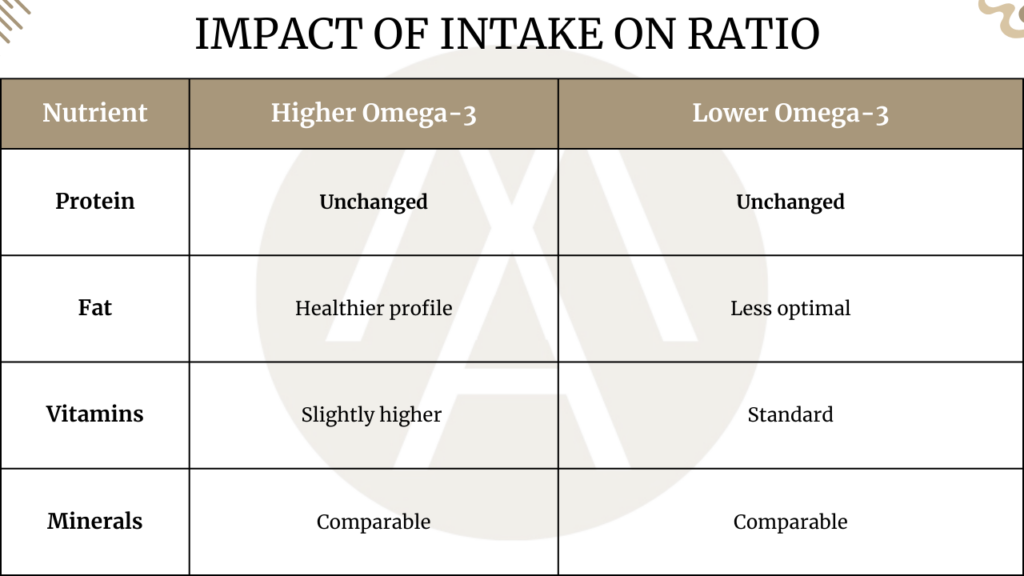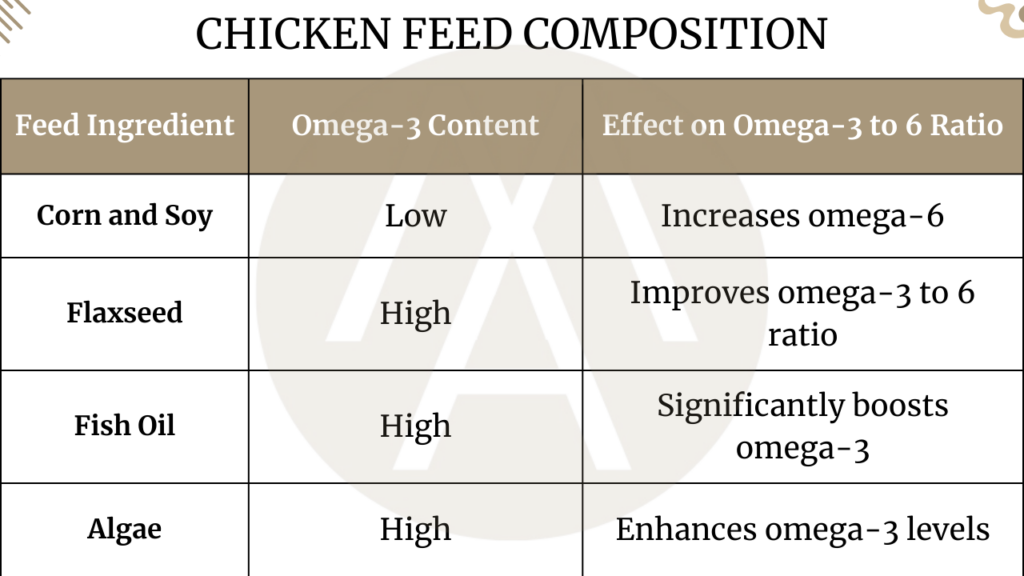Physical Address
304 North Cardinal St.
Dorchester Center, MA 02124
Physical Address
304 North Cardinal St.
Dorchester Center, MA 02124

Did you know the omega-3 to omega-6 ratio in chicken can directly impact your health? From reducing inflammation to enhancing brain and heart function, this balance matters more than you think. Dive into the science behind these fats and how your chicken choices influence your well-being. Read on to learn more!
Ever wondered why some chicken tastes better and feels healthier than others? The answer could lie in the fats, particularly the balance of omega-3 and omega-6 fatty acids.
You probably have heard about omega-3 content in fish, but omega-3-to-6 content is seriously something more over which people really become worried because one will consume chicken no matter what. Maintaining the perfect ratio is proven to enhance mental functionality and further decrease inflammation1.
In this deep dive, we’ll examine why this ratio matters and how to improve it for better dietary choices. Ready to uncover the hidden impact of chicken on your health? Let’s tok-tok-tok into the fascinating world of omega fatty acids in one of the most consumed meats.
Omega-3 fatty acids are vital polyunsaturated fats which your body cannot manufacture2. You must obtain them from the food that you consume. They are highly essential for the adequate functioning of your brain, maintaining heart health, and reducing inflammation within your body.
The general sources of Omega-3 include the following:

Omega-6 fatty acids are another essential polyunsaturated fat4. While they’re essential for your health, the modern diet tends to contain far too much Omega-6.
Common sources of Omega-6 include:
Both Omega-3 and Omega-6 fatty acids play an important role in your overall health. They contribute to6:
The optimal Omega-3:Omega-6 intake ratio is thought to be about 1:1-2. In the modern Western diet, this ratio is usually more like 1:15/167 or even higher. Since such a one-sided ratio encourages inflammation, we’re not going in the right direction, to say the least.
With a background understanding of both Omega-3 and Omega-6 fatty acids, let’s see where chicken fits into this nutritional equation.
The consumption of chicken has grown in recent diets, and consumption worldwide has rapidly increased over the past decades. You might be surprised to know that poultry makes up about 30%8 of the total meat consumed worldwide. This is influenced by a variety of factors, such as:
The following shows a snapshot of regional trends in chicken consumption:
| Region | Consumption Trend | Main Drivers |
|---|---|---|
| North America | Steadily increasing | Health consciousness, versatility |
| Europe | Moderate growth | Convenience, affordability |
| Asia | Rapid growth | Urbanization, rising incomes |
| Africa | Slow but steady increase | Population growth, changing diets |
You might be delighted to learn that chicken is a nutrient powerhouse: it is an excellent source of lean protein and essential vitamins and minerals. Here’s what you can get from one serving of 100g of chicken9:
The fatty acid profile of chicken, including the omega-3 to 6 ratio, is not set in stone.
Several factors influence it, including:
With an understanding of the role that chicken plays in contemporary diets and what affects its nutritional profile, it would be important to explore why the omega-3 to 6 ratio in chicken is so important.
The omega-3 to 6 ratio in chicken plays a great deal in determining the nutritional value. A lower ratio, meaning more omega-3 compared to omega-6, is always healthier.
Have a look at the ratio and how that changes the nutritional profile of chicken:

You will notice a difference in both taste and texture when you eat chicken with a higher omega-3 to 6 ratio:
The ratio of omega-3 to 6 affects how you cook your chicken:
If you eat chicken that has a better balance in omega-3 to 6, then these are the ways your health will be affected11:
Now that you know why it is essential to look at the omega-3 to 6 in chicken, let’s proceed with what modifies this significant nutritional characteristic.
The feed composition greatly dictates the omega-3 to 6 ratio in chicken meat. You will see that chickens raised on feeds high in sources of omega-3, either flaxseed or fish oil, have a very favorable omega-3 to 6 ratio in the meat.
Some common feed ingredients and their contribution to the omega ratio are compared below:

The omega-3 to 6 ratio significantly depends on the treatment of chickens. You’ll realize that:

There are differences between chicken breeds in how well they can metabolize and store omega-3 fatty acids. You’ll find that12:
The processing and storage methods for chicken meat will affect the omega-3 to 6 ratio. Some points that are important when it comes to storing and processing are:
With this brief idea about the factors affecting the ratio of omega-3 to 6 in chicken, let’s delve deep into the strategies to improve this ratio in poultry products for better health.

You may wonder why all this fuss about omega-3 to 6 ratios in chicken should matter to you. Well, it’s simple: what your chicken eats directly affects what you eat.
A balanced omega ratio in chicken can make a big difference in your health and well-being.
When choosing chicken for your meals, you should consider the following:
Here’s a comparison to help you decide better between regular and omega-3 enriched chicken:
| Aspect | Conventional Chicken | Omega-3 Enriched Chicken |
|---|---|---|
| Feed | Primarily grain-based | Includes flaxseed, algae, or fish oil |
| Omega-3 content | Lower | Higher |
| Omega-6 to 3 ratio | Higher (less favorable) | Lower (more favorable) |
| Taste | Standard | May have slight differences |
| Price | Generally lower | Often slightly higher |
You can take several steps to make sure you are getting the most nutritional benefit from chicken: look for labels indicating omega-3 enrichment; when possible, buy chickens labeled free-range or pasture-raised; complement your chicken meals with other omega-3-rich foods; and, finally, the cooking method may impact nutritional value.
All you need to do is be aware of these factors so that the chicken you eat is much healthier, and the farming is better.
Remember, every time you make a choice at the store, it not only affects your health but also the poultry industry’s practices.
The ratio of omega-3 to omega-6 is a very critical factor in chicken, which will greatly influence the state of your health and well-being. Being informed about this very important ratio and what determines its variation, you are able to make informed decisions regarding the chicken you consume.
Everything, from what the chicken eats to how it lives, will determine the nutritional profile of the meat on your plate.
Keep in mind, while making choices in diet, that the enhancement in the ratio of omega-3 to omega-6 in chicken is not related to personal health only but to the sustainable and responsible methods of farming also.
Take this knowledge with you to make informed decisions at the grocery store, and consider exploring local, pasture-raised options for a potentially healthier and more environmentally friendly choice!
The ratio of omega-6 to omega-3 in chicken can vary a great deal, depending on what the chicken has eaten, its farming practices, and breed.
Conventional chicken tends to be much higher in omega-6, ranging from 15:1 to 20:1, which is less healthy.
Omega-3-enriched chicken or pasture-raised chicken may have a better ratio, closer to 2:1 to 5:1, depending on their feed, which may include flaxseed, algae, or fish oil.
The ideal ratio of omega-3 to omega-6, from a health standpoint, would be about 1:1 to 1:4, though it’s postulated that ratios above 1:10 may encourage inflammation and lead to chronic conditions.
Balancing this ratio helps in reducing inflammation, supports heart health, and improves brain function.15
References
Comments are closed.
[…] chicken liver is lighter in taste and texture. Pasture-raised chicken tends to be higher in healthy omega-3 fatty acids and vitamin A, boosting your immune […]
[…] Why the Omega-3 to 6 Ratio in Chicken Matters: A Deep Dive […]